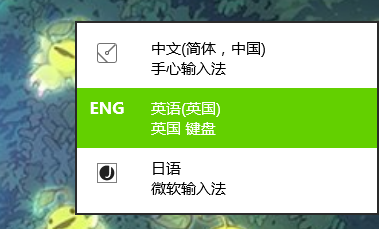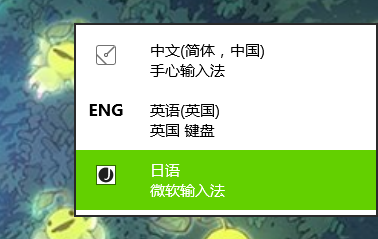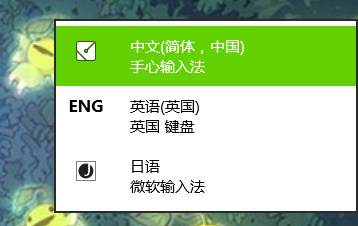 Computer Tutorials
Computer Tutorials
 Computer Knowledge
Computer Knowledge
 Discover the purpose of the Ctrl key on your computer keyboard
Discover the purpose of the Ctrl key on your computer keyboard
Discover the purpose of the Ctrl key on your computer keyboard
Function of the ctrl key on the computer keyboard
The Ctrl key on the computer keyboard has many functions.
It is also a combination key, which can be used with other keys at the same time to have multiple functions.
However, it also has many functions when used alone with the mouse.
described as follows:
First type: [Copy Object] Drag an object with the mouse on the same disk by default to move the object,
When you hold down the ctrl key and drag, it becomes a copied object.
This function is very convenient when copying files within folders, copying folders between disks, copying pictures in PPT and other objects.
Second type: [Select objects] When selecting objects out of order in an open folder or disk,
You can hold down the ctrl key and use the mouse to select the objects you want to select.
You can also select all objects and then hold down the ctrl key and click on the objects to deselect them.
Third method: [Convert curve to straight line] When using "Curve" in "Shape" to draw graphics in PPT,
Hold down the ctrl key and the curve will turn into a straight line. Release the ctrl key and the straight line will return to a curve. Use this function of ctrl to use curves and straight lines alternately when using "curve" drawing in PPT.
The fourth method: [Fix the center position of the shape] When inserting a shape in PPT,
Hold down the ctrl key, select a fixed point with the mouse and drag it to draw a shape centered on the selected point.
The fifth method: [Adjust page display ratio],
Hold down the ctrl key and scroll the mouse wheel,
You can adjust the display ratio of the page in the open window.
The sixth type: [key combination], the ctrl key has many functions in combination with other keys,
For example, ctrl A selects all content on the page, ctrl shift quickly switches input methods,
Ctrl shift can also draw a perfect circle with the selected fixed point as the center in PPT..., I will not list them completely here.
The above content is for reference only!
What do Ctrl and some key combinations mean in computers
These are the specifics:
Ctrl Esc displays the Start menu.
CTRL Right Arrow Moves the insertion point to the beginning of the next word.
CTRL Left Arrow Moves the insertion point to the beginning of the previous word.
CTRL Down Arrow Moves the insertion point to the beginning of the next paragraph.
CTRL Up Arrow Moves the insertion point to the beginning of the previous paragraph.
CTRL SHIFT Any arrow key Highlights a block of text.
Ctrl S Save
Ctrl W Close program
Ctrl N New
Ctrl O Open
Ctrl Z Undo
Ctrl F Find
Ctrl X Cut
Ctrl C Copy
Ctrl V Paste
Ctrl A Select All
Ctrl [Reduce text
Ctrl ] Enlarge text
Ctrl B bold
Ctrl I italic
Ctrl U Underline
Ctrl Shift input method switching
Ctrl space switch between Chinese and English
Ctrl Enter to send message in QQ number
Ctrl Home Move the cursor to the file header quickly
Ctrl End moves the cursor to the end of the file quickly
Ctrl Esc Show Start Menu
Ctrl Shift
Ctrl Shift > Quickly enlarge text
Ctrl F5 Force refresh in IE
Ctrl F4 Closes the current document in a program that allows multiple documents to be opened at the same time.
Ctrl drag file copy file
Ctrl Backspace Start\Close input method
Hold Ctrl Shift while dragging files to create shortcuts
Extended information:
Solution to the problem that the ctrl key cannot switch the input method
1. In win8 or win10, ctrl shift is often no longer effective. At this time, you can switch the input method by selecting the correct shortcut key.
2. Press the "windows logo key + space" to switch the input method once.

3. Long press the "windows logo key" and then press the space. You will find that your input method will be displayed. If you press the space again (of course, the windows logo key remains pressed and does not let go), You will switch to the next input method. You can use this operation to continuously switch input methods.


The above is the detailed content of Discover the purpose of the Ctrl key on your computer keyboard. For more information, please follow other related articles on the PHP Chinese website!

Hot AI Tools

Undresser.AI Undress
AI-powered app for creating realistic nude photos

AI Clothes Remover
Online AI tool for removing clothes from photos.

Undress AI Tool
Undress images for free

Clothoff.io
AI clothes remover

AI Hentai Generator
Generate AI Hentai for free.

Hot Article

Hot Tools

Notepad++7.3.1
Easy-to-use and free code editor

SublimeText3 Chinese version
Chinese version, very easy to use

Zend Studio 13.0.1
Powerful PHP integrated development environment

Dreamweaver CS6
Visual web development tools

SublimeText3 Mac version
God-level code editing software (SublimeText3)

Hot Topics
 1378
1378
 52
52
 Discover How to Fix Drive Health Warning in Windows Settings
Mar 19, 2025 am 11:10 AM
Discover How to Fix Drive Health Warning in Windows Settings
Mar 19, 2025 am 11:10 AM
What does the drive health warning in Windows Settings mean and what should you do when you receive the disk warning? Read this php.cn tutorial to get step-by-step instructions to cope with this situation.
 How do I edit the Registry? (Warning: Use with caution!)
Mar 21, 2025 pm 07:46 PM
How do I edit the Registry? (Warning: Use with caution!)
Mar 21, 2025 pm 07:46 PM
Article discusses editing Windows Registry, precautions, backup methods, and potential issues from incorrect edits. Main issue: risks of system instability and data loss from improper changes.
 How do I manage services in Windows?
Mar 21, 2025 pm 07:52 PM
How do I manage services in Windows?
Mar 21, 2025 pm 07:52 PM
Article discusses managing Windows services for system health, including starting, stopping, restarting services, and best practices for stability.
 How to Fix the Steam Cloud Error? Try These Methods
Apr 04, 2025 am 01:51 AM
How to Fix the Steam Cloud Error? Try These Methods
Apr 04, 2025 am 01:51 AM
The Steam Cloud error can be caused by many reasons. To play a game smoothly, you need to take some measures to remove this error before you launch the game. php.cn Software introduces some best ways as well as more useful information in this post.
 How do I change the default app for a file type?
Mar 21, 2025 pm 07:48 PM
How do I change the default app for a file type?
Mar 21, 2025 pm 07:48 PM
Article discusses changing default apps for file types on Windows, including reverting and bulk changes. Main issue: no built-in bulk change option.
 Windows Metadata and Internet Services Problem: How to Fix It?
Apr 02, 2025 pm 03:57 PM
Windows Metadata and Internet Services Problem: How to Fix It?
Apr 02, 2025 pm 03:57 PM
You may see the “A connection to the Windows Metadata and Internet Services (WMIS) could not be established.” error on Event Viewer. This post from php.cn introduces how to remove the Windows Metadata and Internet Services problem.
 How do I use the Group Policy Editor (gpedit.msc)?
Mar 21, 2025 pm 07:48 PM
How do I use the Group Policy Editor (gpedit.msc)?
Mar 21, 2025 pm 07:48 PM
The article explains how to use the Group Policy Editor (gpedit.msc) in Windows for managing system settings, highlighting common configurations and troubleshooting methods. It notes that gpedit.msc is unavailable in Windows Home editions, suggesting
 How to Resolve the KB5035942 Update Issues – Crashing System
Apr 02, 2025 pm 04:16 PM
How to Resolve the KB5035942 Update Issues – Crashing System
Apr 02, 2025 pm 04:16 PM
KB5035942 update issues - crashing system commonly happens to users. Inflicted people hope to find a way out of the kind of trouble, such as crashing system, installation, or sound issues. Targeting these situations, this post published by php.cn wil



